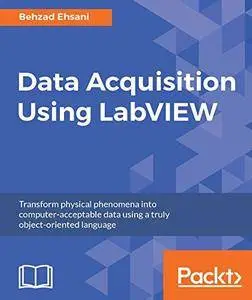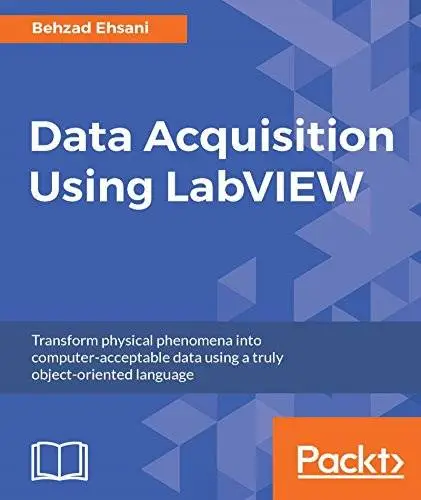Data Acquisition using LabVIEW by Behzad Ehsani
English | 6 Feb. 2017 | ISBN: 1782172165 | 122 Pages | AZW3/MOBI/EPUB/PDF (conv) | 33.38 MB
English | 6 Feb. 2017 | ISBN: 1782172165 | 122 Pages | AZW3/MOBI/EPUB/PDF (conv) | 33.38 MB
Key Features
Create your own data acquisition system independently using LabVIEW and build interactive dashboards
Collect data using National Instrument's and third-party, open source, affordable hardware
Step-by-step real-world examples using various tools that illustrate the fundamentals of data acquisition
Book Description
NI LabVIEW's intuitive graphical interface eliminates the steep learning curve associated with text-based languages such as C or C++. LabVIEW is a proven and powerful integrated development environment to interact with measurement and control hardware, analyze data, publish results, and distribute systems. LabVIEW is one of the most popular types of software for data acquisition and analysis in all fields because of its graphical programming-based approach.
This hands-on tutorial, to helps you harness the power of LabVIEW for data acqusition. This book begins with a quick introduction to LabVIEW, familiarizing you with the basics of it. It provides information about the fundamentals of communication, telling you how to connect your system, which has LabVIEW installed, with other devices you are collecting data from.
The book then unleashes the power of the auto-code generation feature of LabVIEW using its GUI interface. You will learn how to use NI-DAQmax Data acquisition VIs, showing how LabVIEW can be used to appropriate a true physical phenomenon (such as temperature, light, and so on) and convert it to an appropriate data type that can be manipulated and analyzed with a computer. You will also learn how to create Distribution Kit for LabVIEW, acquainting yourself with various debugging techniques offered by LabVIEW to help you in situations where bugs are not letting you run your programs as intended.
By the end of the book, you will have a clear idea how to build your own data acquisition system independently and much more.
What you will learn
Create a virtual instrument which highlights common functionality of LabVIEW
Get familiarized with common buses such as Serial, GPIB, and SCPI commands
Staircase signal acquisition using NI-DAQmx
Discover how to measure light intensity and distance
Master LabVIEW debugging techniques
Build a data acquisition application complete with an installer and required drivers
Utilize open source microcontroller Arduino and a 32-bit Arduino compatible Uno32 using LabVIEW programming environment
About the Author
Behzad Ehsani is a Bachelor of Science in Computer Engineering from California State University (CSUS) with over fourteen years of engineering experience in various sectors of the industry. Starting at Packard-Bell and Apple Computers and moving on to Laser, Communications and Sensors industry, the author has solid experience in system instrumentation and data acquisition system.



